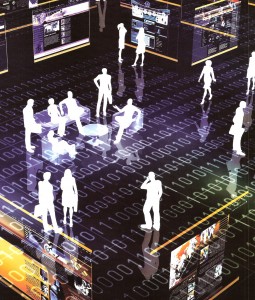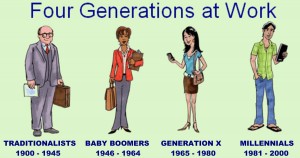The actions of a planeload of passengers and a town full of wonderful people on 9/11 are a testament to the human spirit. Here’s an abbreviated account of what happened in Gander, Newfoundland, and nearby communities in the wake of the terrorist attack. It is a true story, written by a flight attendant on Delta Flight 15.
On the morning of Tuesday, Sept. 11, we were about five hours out of Frankfurt, flying over the North Atlantic. I was told to go to the cockpit, immediately. On arrival the captain handed me a printed message from Delta’s main office in Atlanta. It said: “All airways over the continental United States are closed to commercial air traffic. Land ASAP at the nearest airport. Advise your destination.”
The captain determined that the nearest airport was 400 miles behind us in Gander, Newfoundland. He requested and immediately received approval for a route change from Canadian traffic control. A few minutes later word came from Atlanta about the hijackings. We told the passengers the plane had a simple instrument problem and that we needed to land at the nearest airport to have it checked out. We promised to give more information after landing.
 When we landed about 40 minutes later, we found there were already about 20 other airplanes on the ground from all over the world. After we parked, the captain made the following announcement: “Ladies and gentlemen, you must be wondering if all these airplanes around us have the same instrument problem as we have. The reality is that we are here for another reason.” He then explained the little we knew about the situation in the U.S. There were loud gasps and stares of disbelief. The captain informed passengers that ground control in Gander told us to stay put.
When we landed about 40 minutes later, we found there were already about 20 other airplanes on the ground from all over the world. After we parked, the captain made the following announcement: “Ladies and gentlemen, you must be wondering if all these airplanes around us have the same instrument problem as we have. The reality is that we are here for another reason.” He then explained the little we knew about the situation in the U.S. There were loud gasps and stares of disbelief. The captain informed passengers that ground control in Gander told us to stay put.
The Canadian Government was in charge of our situation and no one was allowed to get off the aircraft. No one on the ground was allowed to come near any of the planes. Only airport police would come around periodically, look us over and go on to the next plane. In the next hour or so more planes landed and Gander ended up with 53 airplanes from all over the world, 27 of which were U.S. commercial jets.
Meanwhile, bits of news started to come in over the aircraft radio and for the first time we learned that airplanes were flown into the World Trade Center in New York and into the Pentagon in DC. People were
trying to use their cell phones, but were unable to connect due to a different cell system in Canada . Some did get through, but were only able to get to the Canadian operator who would tell them that the lines to the U.S. were either blocked or jammed.
Sometime in the evening the news filtered to us that the World Trade Center buildings had collapsed and that a fourth hijacking had resulted in a crash. By now the passengers were emotionally and physically
exhausted, not to mention frightened, but everyone stayed amazingly calm. We had only to look out the window at the 52 other stranded aircraft to realize that we were not the only ones in this predicament.
We had been told earlier that they would be allowing people off the planes one plane at a time. At 6 p.m. Gander airport told us that our turn to deplane would be 11 a.m. the next morning. Passengers were not happy, but they simply resigned themselves to this news without much noise and started to prepare themselves to spend the night on the airplane.
Gander had promised us medical attention, if needed, water, and lavatory servicing. And they were true to their word. Fortunately we had no medical situations to worry about. We did have a young lady who was 33 weeks into her pregnancy. We took really good care of her. The night passed without incident despite the uncomfortable sleeping arrangements.
About 10:30 on the morning of the 12th a convoy of school buses showed up. We got off the plane and were taken to the terminal where we went through Immigration and Customs and then registered with the Red Cross.
After that the crew and passengers were separated. The crew was taken in vans to a small hotel. We had no idea where our passengers were going. We learned from the Red Cross that the town of Gander has a population of 10,400 people and they had about 10,500 passengers to take care of from all the airplanes that were forced into Gander! We were told to just relax at the hotel and we would be contacted when the U.S. airports opened again, but not to expect that call for a while.
We found out the total scope of the terror back home only after getting to our hotel and turning on the TV, 24 hours after it all started. Meanwhile, we had lots of time on our hands and found that the people of Gander were extremely friendly. They started calling us the “plane people.” We enjoyed their hospitality, explored the town of Gander and ended up having a pretty good time.
Two days later, we got that call and were taken back to the Gander airport. Back on the plane, we were reunited with the passengers and found out what they had been doing for the past two days. What we found out was incredible.
Gander and all the surrounding communities (within about a 75 kilometer radius) had closed all high schools, meeting halls, lodges and any other large gathering places. They converted all these facilities to mass lodging areas for all the stranded travelers. Some had cots set up, some had mats with sleeping bags and pillows set up. All the high school students were required to volunteer their time to take care of the “guests.” Our 218 passengers ended up in a town called Lewisporte, about 45 kilometers from Gander where they were put up in a high school. All the elderly passengers were taken to private homes.
The young pregnant lady was put up in a private home right across the street from a 24-hour urgent care facility. There was a dentist on call and both male and female nurses remained with the crowd for the duration.
Phone calls and e-mails to the U.S. and around the world were available to everyone once a day. During the day, passengers were offered “excursion” trips. Some people went on boat cruises of the lakes and harbors. Some went for hikes in the local forests. Local bakeries stayed open to make fresh bread for the guests. Food was prepared by all the residents and brought to the schools. People were driven to restaurants of their choice and offered wonderful meals. Everyone was given tokens for local laundry mats to wash their clothes, since luggage was still on the aircraft. In other words, every single need was met for those stranded travelers.
Passengers were crying while telling us these stories. Finally, when they were told that U.S. airports had reopened, they were delivered to the airport right on time and without a single passenger missing or late. The local Red Cross had all the information about the whereabouts of each and every passenger and knew which plane they needed to be on and when all the planes were leaving. They coordinated everything beautifully. It was absolutely incredible.
When passengers came on board, it was like they had been on a cruise. Everyone knew each other by name. They were swapping stories of their stay, impressing each other with who had the better time. Our
flight to Atlanta looked like a chartered party flight. The crew just stayed out of their way. It was mind-boggling. Passengers had totally bonded and were calling each other by their first names, exchanging phone numbers, addresses and email addresses.
And then a very unusual thing happened. One of our passengers approached me and asked if he could make an announcement over the PA system. We never, ever allow that. But this time was different. I said “of course” and handed him the mike. He picked up the PA and reminded everyone about what they had just gone through in the last few days. He reminded them of the hospitality they had received at the hands of total strangers. He continued by saying that he would like to do something in return for the good folks of Lewis Porte.
He said he was going to set up a trust fund under the name of Delta 15 (our flight number). The purpose of the trust fund is to provide college scholarships for the high school students of Lewis Porte. He asked for donations of any amount from his fellow travelers. When the paper with donations got back to us with the amounts, names, phone numbers and addresses, the total was for more than $14,000!
The gentleman, a doctor from Virginia, promised to match the donations and to start the administrative work on the scholarship. He also said that he would forward this proposal to Delta Corporate and ask them to
donate as well.
Today the trust fund is at more than $1.5 million and has assisted 134 students in college education.
I just wanted to share this story because we need good stories right now. It gives me a little bit of hope to know that some people in a faraway place were kind to some strangers who literally dropped in on them. It reminds me how much good there is in the world.
 will offer a plethora of computers – Macs and PCs – along with high-speed Internet access, 3D printers, digital TVs and desktop work stations equipped with dual monitors. Rounding out the offerings will be the latest software from basic Photoshop to advanced computer-assisted drawing. Do Space will include a 3D printing lab, surrounded by glass, where people can learn how to use the printers and make inventions come to life.
will offer a plethora of computers – Macs and PCs – along with high-speed Internet access, 3D printers, digital TVs and desktop work stations equipped with dual monitors. Rounding out the offerings will be the latest software from basic Photoshop to advanced computer-assisted drawing. Do Space will include a 3D printing lab, surrounded by glass, where people can learn how to use the printers and make inventions come to life.
